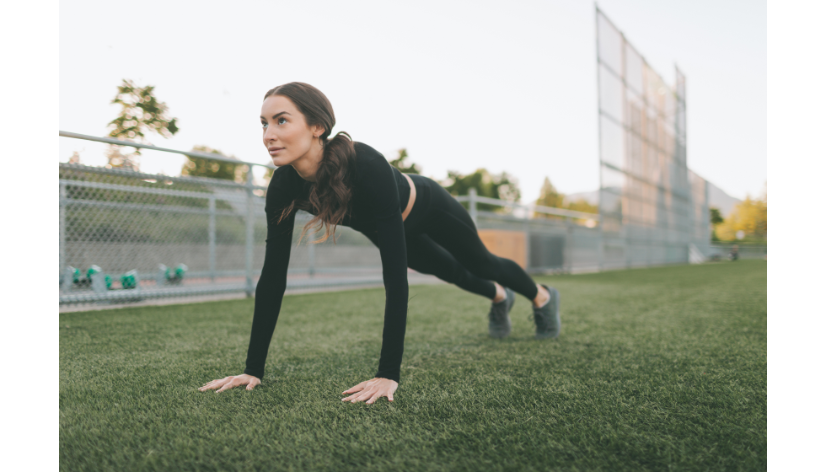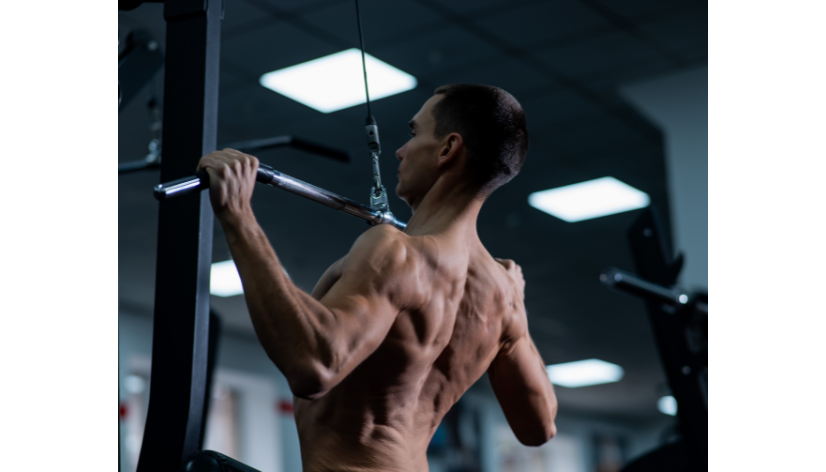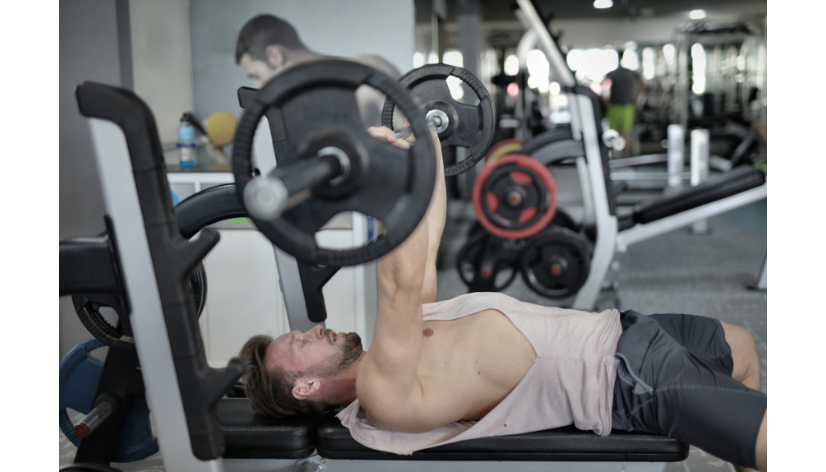A well-defined chest not only enhances your physical appearance but also contributes to overall strength and functionality. Whether you’re a fitness enthusiast looking to build a chiseled physique or someone seeking to improve upper body strength, a targeted chest workout is essential. In this comprehensive guide, we’ll delve into the science behind chest workouts, the anatomy of the chest muscles, and an effective workout routine to help you achieve your fitness goals.
Understanding Chest Anatomy
Before jumping into specific exercises, it’s crucial to understand the anatomy of the chest. The chest muscles, or pectorals, comprise of two fundamental parts: the pectoralis major and pectoralis minor. The pectoralis major is the larger muscle responsible for the bulk of your chest, while the pectoralis minor is a smaller muscle beneath it.
The chest is a complex region, and to effectively target and stimulate muscle growth, it’s important to engage both the upper and lower chest. Various exercises can isolate these areas, leading to a well-rounded and aesthetically pleasing chest.
Effective Chest Exercises

1. Bench Press:
– The bench press is a fundamental compound exercise that targets the entire chest.
– Start with a comfortable weight, ensuring proper form by keeping your back flat on the bench and maintaining a controlled movement.
– Vary your grip (wide, narrow, or neutral) to target different areas of the chest
2. Push-Ups
– Push-ups are a flexible bodyweight practice that connects with the chest, shoulders, and rear arm muscles.
– Modify your hand placement to emphasize different areas of the chest, such as wide grip for the outer chest and narrow grip for the inner chest.
3. Dumbbell Flyes:
– Dumbbell flyes isolate the chest and provide a deep stretch, promoting muscle development.
– Lie on a flat or incline bench and perform controlled flye movements, focusing on the stretch and contraction of the chest muscles.
4. Incline Bench Press:
– Target the upper chest by incorporating the incline bench press into your routine.
– Adjust the bench to a 15-30 degree incline, emphasizing the upper portion of the pectoralis major.
5. Chest Dips:
– Chest dips are an effective bodyweight exercise that targets the lower chest.
– Use parallel bars and lean slightly forward to engage the chest muscles.
Creating Your Chest Workout Routine

Now that we’ve covered essential chest exercises, let’s design a workout routine that maximizes muscle engagement and promotes balanced development.
1. Warm-Up (10 minutes):
– Begin with 5-10 minutes of light cardio to increase blood flow to the muscles.
– Perform dynamic stretches like arm circles and shoulder rolls to prepare the chest muscles.
2. Compound Exercises (40% of Workout):
– Start with bench press variations, focusing on 3-4 sets of 8-12 repetitions.
– Incorporate push-ups into your routine, aiming for 3 sets of 15-20 repetitions.
3. Isolation Exercises (40% of Workout):
– Include dumbbell flyes for 3 sets of 10-15 repetitions.
– Integrate incline bench press for 3 sets of 8-12 repetitions to target the upper chest.
– Add chest dips to emphasize the lower chest, aiming for 3 sets of 12-15 repetitions.
4. Accessory Exercises (20% of Workout):
– Strengthen supporting muscles with triceps exercises like tricep dips or skull crushers.
– Incorporate shoulder exercises like lateral raises to enhance overall upper body aesthetics.
Tips For Optimal Results
1. Focus on Form:
– Maintain proper form to prevent injuries and ensure effective muscle engagement.
2. Progressive Overload:
– Gradually increase weights to challenge your muscles and stimulate growth over time.
3. Consistency is Key:
– Stick to a regular workout schedule, allowing adequate rest and recovery between sessions.
4. Nutrition and Hydration
– Support your workouts with a balanced diet rich in protein to aid muscle recovery.
– Stay hydrated to optimize performance and prevent fatigue.
Conclusion
Incorporating a well-rounded chest workout into your fitness routine is essential for building strength, enhancing aesthetics, and achieving overall upper body balance. By understanding the anatomy of the chest and incorporating a variety of exercises, you can create a comprehensive workout routine that targets all aspects of this vital muscle group. Remember to prioritize proper form, stay consistent, and adjust your routine based on individual progress. With dedication and the right approach, you’ll be on your way to unlocking the power of a strong and sculpted chest.
FAQs
1. Q: How often should I work out my chest?
– A: It’s generally recommended to train each muscle group, including the chest, 1-3 times per week. However, individual factors such as recovery time and fitness level play a role. Pay attention to your body and change the recurrence as needs be.
2. Q: Can I do chest workouts at home without gym equipment?
– A: Absolutely. Bodyweight exercises like push-ups, chest dips, and variations of these movements can effectively target your chest muscles. Additionally, household items like water bottles or resistance bands can be used for added resistance.
3. Q: How do I prevent shoulder injuries during chest workouts?
– A: Ensure proper form during exercises, especially when performing movements like the bench press. Warm up your shoulders with dynamic stretches, and consider incorporating rotator cuff exercises into your routine to strengthen the shoulder muscles.
4. Q: Is it better to use free weights or machines for chest workouts?
– A: Both free loads and machines enjoy their benefits. Free weights, like dumbbells and barbells, engage stabilizing muscles, promoting overall strength. Machines can be beneficial for beginners, as they provide more stability. Ideally, a combination of both can be incorporated into your routine.
5. Q: What role does nutrition play in chest muscle development?
– A: Nutrition is crucial for muscle growth. Ensure an adequate intake of protein to support muscle recovery and growth. Include a mix of carbohydrates and healthy fats for energy, and stay hydrated to optimize overall performance.
6. Q: How long should a chest workout session last?
– A: The duration of a chest workout can vary, but a well-structured session typically lasts 45 minutes to an hour. Focus on quality over quantity, ensuring each exercise is performed with proper form and intensity.
7. Q: Can women benefit from chest workouts, or is it just for men?
– A: Absolutely. Chest exercises are valuable for all kinds of people.. Strengthening the chest muscles contributes to overall upper body strength, posture, and can enhance the appearance of the chest region for both genders.
8. Q: Will chest workouts make my breasts smaller or larger?
– A: Chest workouts primarily target the pectoral muscles, which are beneath the breast tissue. While building chest muscles can provide lift and firmness, it doesn’t significantly affect breast size. Breast size is determined by factors like genetics and body composition.
9. Q: How do I know if I’m overtraining my chest?
– A: Signs of overtraining include persistent fatigue, lack of progress, and increased susceptibility to injuries. Ensure you incorporate rest days into your routine, listen to your body, and adjust the intensity and frequency of your workouts accordingly.
10. Q: Can chest workouts improve posture?
– A: Yes, strengthening the chest muscles can contribute to improved posture by balancing the muscles in the upper body. A strong chest helps counteract the effects of slouching and rounded shoulders, promoting a more upright and aligned posture.

